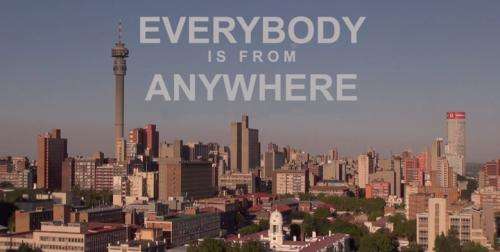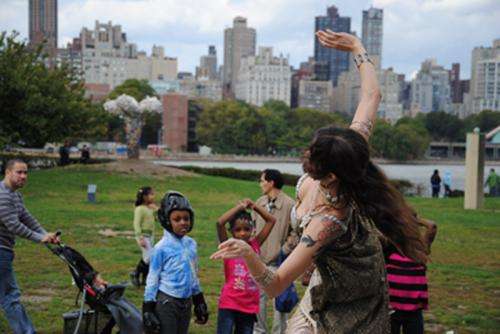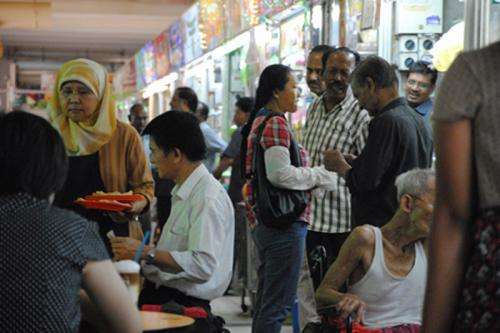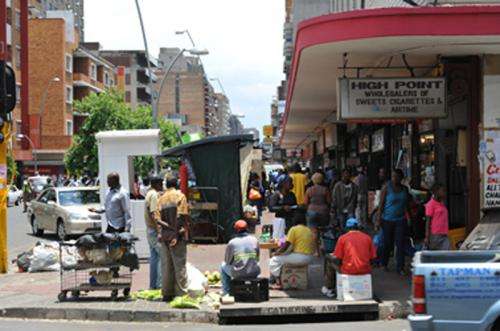Comparatively conceiving, observing and visualising diversification in public urban spaces

How can people live together, with ever more diverse characteristics, in the world's rapidly expanding cities? What are the similarities and differences in social and spatial patterns that arise when new diversity meets old diversity? A project at the Max Planck Institute for the Study of Religious and Ethnic Diversity investigates the changing nature of diversity and its socio-spatial patterns in three locations of super-diversity: New York, Singapore, and Johannesburg.
Enabled by an Advanced Investigator Grant of the European Research Council (ERC), this project studies rapid social diversification in three global cities. The key question it seeks to answer: In public spaces compared across cities, what accounts for similarities and differences in social and spatial patterns that arise under conditions of diversification when new diversity meets old diversity? The project encompasses qualitative research in three cities of super-diversity: in New York (the classic city of immigration with new global migrant flows in a broadly supportive political context); in Singapore (dominated by strict racial-cultural politics and wholly dependent on new, highly restricted migrants); and in Johannesburg (emerging from Apartheid with tensions surrounding new, unregulated pan-African migrant flows). A team of twelve scientists, among them local expert advisors from the fields of anthropology, sociology and human geography, seek to study these processes of diversification, about which only little is known thus far, and explore the social stratification of old and new diversity. The project makes use of three strategic research methods: conceiving (understanding how old and new diversities are locally understood), observing (producing ethnographies of interaction) and visualising (using photographs, film and innovative data mapping).
Research locations
The cities were chosen according to a "diverse case" selection strategy so that multiple variables could be taken into account. These variables refer to possible modes, constraints and opportunities of encountering social diversity. The selection reflects the differentiated historical and political-economic circumstances behind the changing patterns and politics of diversity in cities and neighbourhoods. Looking at diversification in key global cities will become increasingly relevant as more and more cities come to resemble them in terms of economic, demographic and cultural flows.
In each case city, the neighbourhoods were selected with attention to contexts in which new super-diversity is evident, where no single group dominates, and where spatial, visual and social manifestations of old and new diversities can be seen to converge. The public spaces within each city district offer common sites for fleeting and more sustained encounters embodying processes of stress, alongside processes in which new and productive modes of interaction become manifest.
Research location (1): New York City

New York is a classic immigration city and has historically received several waves of newcomers. With a population of just over 8 million, foreign-born residents comprise 36% of the city. New York's foreign-born population has doubled in the past thirty years. Breaking out of the pattern of successive waves from different places of origin, contemporary immigration to New York is characterised by extraordinary diversity. It is often said that today, virtually every country in the world is represented by recent migrants to the city. They embody an increased heterogeneity of human capital, occupational and class backgrounds, which is indicative of differing migration processes and channels, legal statuses and transnational practices. For instance, women outnumber men in nearly all foreign-born groups (with important exceptions including Mexicans and Bangladeshis, among whom there are far more men).
Each borough of New York has a unique mix of old and new diversities. In Queens, 46% of 2.2 million people were born abroad. The project's research activities focus on public spaces in the Astoria district in Queens, where most foreign-born residents come from Greece, Bangladesh, Ecuador, Mexico, Colombia, Italy, Dominican Republic, Brazil, China, and India. The field sites focus on key public spaces including commercial streets such as 23rd Street, Athens Park and the Two Coves Community Garden.
Research location (2): Singapore

Singapore has been a highly regulated, multi-ethnic city since colonial times. Politics and public campaigns are based on the official multi-racial CMIO model (Chinese, Malay, Indian, and "Others"), together with the establishment of four official languages (Malay, Mandarin, Tamil and English). However, Singapore is extremely dependent on labour migrants for its continuing economic development. This migration is controlled by a restrictive work permit system for low-skilled labourers, while there are also large numbers of highly-skilled foreign workers and students. In recent years, Singapore's non-resident workforce increased by 170% – from 248,000 in 1990 to 670,000 in 2006. UN estimates suggest that international migrants comprise over 1.9 million (40.7%) of Singapore's total population of 4.8 million. The majority of them come from India, Bangladesh, Sri Lanka, the Philippines, Myanmar and Thailand via bilateral agreements. Old migration streams, especially from China and Malaysia, conditioned by colonial politics, continue to be important alongside the recent arrivals from elsewhere. A major government concern in Singapore is to ensure that the foreign worker population remains temporary. Diversity is restricted by ambiguous categories such as citizen/non-citizen and resident/non-resident, while "use and discard" state measures prevent immigrants from gaining any significant foothold in Singaporean society.
In Singapore, the project concentrates on the Jurong West area (pop. 264,000 in 2009). With an estimated 1000 factories and shipyards, this neighbourhood is well known for its mixed immigrant concentration. Tens of thousands of foreign (far more male than female) workers live in designated dormitories. Important public spaces for research are the Jurong Point Shopping Centre, the Public Library and numerous surrounding hawker centres (comprised of food stalls from all over Asia).
Research location (3): Johannesburg

Migration to South Africa (and to Johannesburg in particular) from the region, the continent and the rest of the world increased dramatically since the collapse of Apartheid. Current demographics concerning immigration to South Africa are exceedingly difficult to get hold of and, moreover, entail very heated political debates within the country, meaning the available statistics are not necessarily sound. A reasoned estimate suggests that between one and three million foreigners – legal and illegal – from all over Africa reside in South Africa, although the numbers may be rising due to the ongoing crisis in Zimbabwe. Many of the migrants moving to Johannesburg originate from Zimbabwe, the Democratic Republic of Congo, Mozambique, Namibia, Lesotho, Somalia, Nigeria and other regions of South Africa. The migrants' precarious legal status determines their social, economic and geographic position within society. These facts have significant ramifications for shaping public discourse, public spaces and the city as a whole. Johannesburg is a city characterised by extremely high levels of intolerance and xenophobia, which sparked terrible riots in 2008.
Presentation
Project research is being conducted in the Hillbrow district (estimated population 97,000). Formerly a "whites only" area, Hillbrow has meanwhile become a central site for migration from townships, from throughout rural South Africa and from all over Africa. Important public spaces for this project are Hillbrow Market, Pretoria Street and Berea Park.
Even though the project is still ongoing, empirical data and analyses have already been presented at numerous conventions and scientific workshops around the world. Two ethnographic photo exhibitions resulting from this project were organised and opened to the public in New York and Singapore. Furthermore, the first versions of two ethnographic films were screened for local audiences in New York and Johannesburg. Numerous publications are planned in the coming years. The project team plans to publish scientific articles, as well as an edited volume and a monograph on theory. And lastly, five films will also be produced within the framework of this project: one film each on the new diversity, spatial dynamics and interactions in each city, another film comparing the three city districts, and finally a film featuring the project itself, including its scope, methods and development.
Provided by Max Planck Society

















